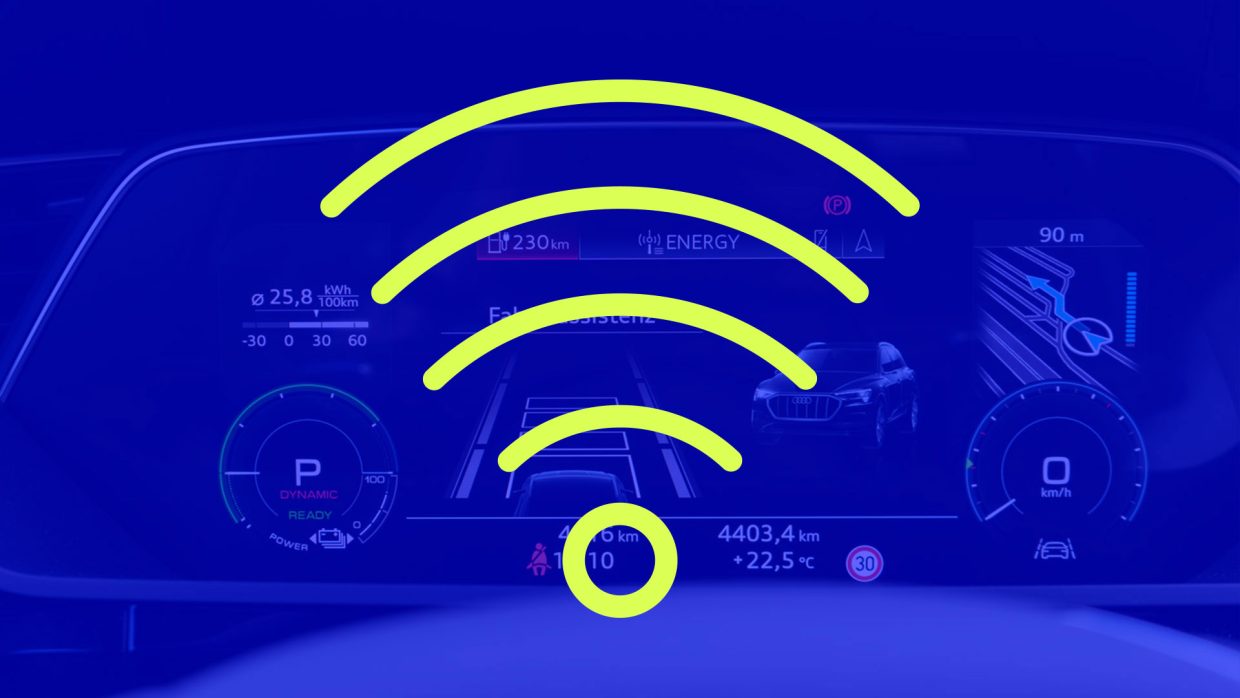A couple of weeks ago, I had the opportunity to discuss the latest user experience trends in the automotive sector with some fellow industry experts at the Intuitive Vehicle Conference in Stuttgart.
Since then, several people have asked me about the contents of the discussion, so I decided to give you some insights on a couple of topics we discussed.
First of all, what is user experience (UX) and why is it important in the automotive industry (but not only…)?
WHY IS UX SO IMPORTANT IN VEHICLES?
When you surf the web or scroll through your social media, you can get the impression, that User Experience or UX is on the rise. And indeed, it is something I also notice when talking to our clients.
BUT WHAT EXACTLY IS USER EXPERIENCE?
This is about more than just listening to music. Spotify gives insights on the way the listener has used the product, showing for example what her or his top artists, songs, or podcasts were. The brand thus encourages the user to talk and discuss it with friends and family (“You heard 20h of the podcast? I even listened to 45h!”). In the end, Spotify designs functions that not only relate to the core functionality of their product but improve the experience of the “after use” phase of the product.
If we abstract this, we can see that user experience is important as soon as you design, develop or sell products or services.
In the end, they will be purchased, used, and hopefully recommended by customers, so the user experience is a fundamental component of that process.
One aspect of that is also that users know about available options. In one of our observational studies, for instance, participants were instructed to listen to some music in their vehicle. One of the users took out his smartphone, set it up in the center console, and hit play – without having connected the phone to the vehicle! The music was playing directly from the smartphone. The expensive in-car sound system was left unused. The option of connecting the smartphone to the vehicle was in this instance not self-explanatory to the participant. (If you want to read more funny anecdotes from our daily work, check out this article that my colleague Arne Bachmann wrote).
Considering user experience with regards to vehicles is particularly interesting right now because we have reached a turning point. Indeed, compared to other consumer goods UX in vehicles has, in the past, not been given the importance it deserves.
Right now, several things are happening at once:
The complexity of technology, functions, and interaction possibilities with the vehicle is growing – and users are increasingly overwhelmed.
At the same time, other consumer goods and services such as phones, banking/payment processes, or online shopping are fundamentally changing and shaping customer expectations. “Vorsprung Durch Technik”, or betting on technology alone is not enough anymore; it does not provide a long-lasting advantage any longer. The experience with a product or a service has become a significant feature for differentiation. Take Tesla for instance. The brand is notoriously positioning itself as a digital brand with a seamless customer experience. And when it comes to their connected services, this is indeed true. Tesla is a front runner for ready-to-use services. As soon as your vehicle is delivered, you can use all its connected services. You simply have to connect to your account (which you created during the order process) and you are good to go! This is a feature that really sets the brand apart in comparison to other manufacturers.
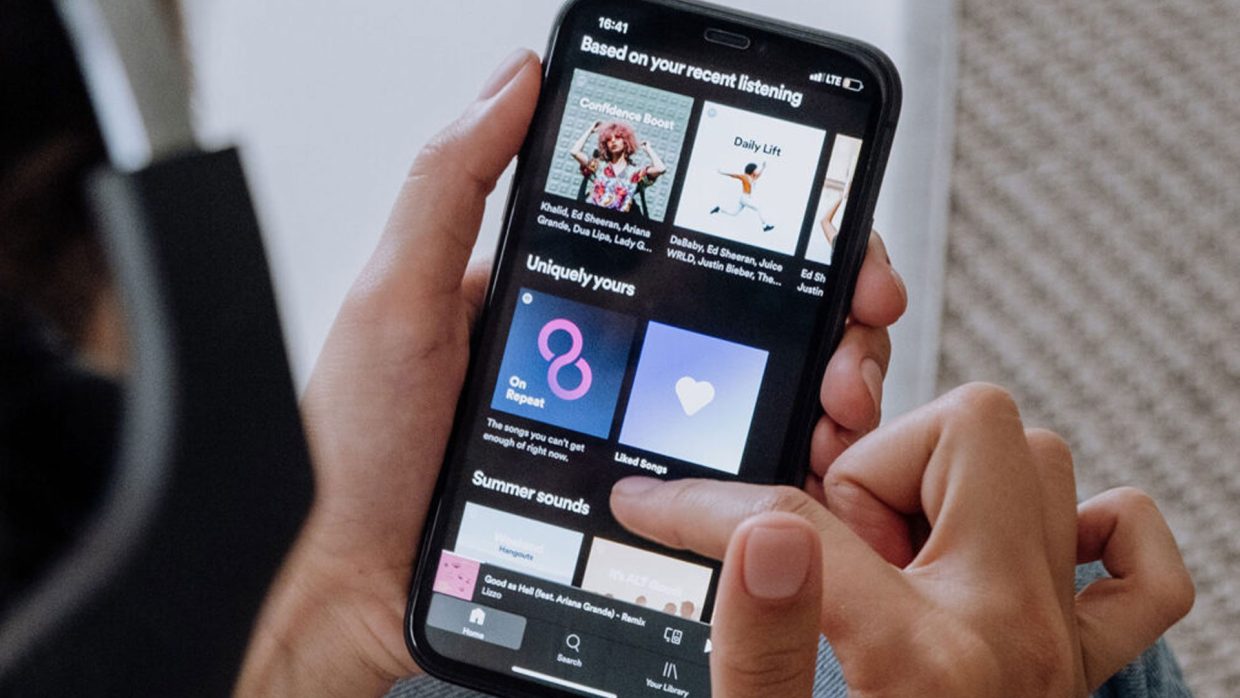
Dabei geht es um viel mehr als nur Musik hören. Spotify gibt Einblicke darin, wie der Nutzer das Produkt genutzt hat und zeigt z.B. Ihre oder Seine Lieblingsartist*innen, -Lieder oder -Podcasts an. Die Marke regt also einen dazu an darüber mit Freunden oder der Familie zu sprechen oder zu diskutieren („Du hast 20 Stunden Podcasts gehört? Ich sogar 45!“). So formt Spotify Funktionalitäten, die über das eigentliche Produkt hinaus gehen und somit die User Experience der Nachnutzungsphase verbessern.
Abstrahiert bedeutet das, dass die User Experience wichtig ist, sobald Sie Produkte oder Dienstleistungen entwerfen, entwickeln oder verkaufen.
Letztendlich werden sie gekauft, verwendet und hoffentlich von Kunden empfohlen, so dass die User Experience eine grundlegende Komponente dieses Prozesses ist.
Ein Aspekt davon ist auch, dass die Benutzer über die verfügbaren Optionen Bescheid wissen. In einer unserer Beobachtungsstudien zum Beispiel, wurden die Teilnehmer*innen angewiesen, in ihrem Fahrzeug Musik zu hören. Einer der Benutzer nahm sein Smartphone heraus, stellte es in der Mittelkonsole auf und drückte auf Play – ohne das Telefon mit dem Fahrzeug verbunden zu haben!
Die Musik wurde direkt vom Smartphone abgespielt. Das teure Soundsystem im Auto blieb ungenutzt. Die Möglichkeit, das Smartphone mit dem Fahrzeug zu verbinden, war in diesem Fall für den Teilnehmer nicht selbsterklärend. (Wenn Sie weitere lustige Anekdoten aus unserer täglichen Arbeit lesen möchten, schauen Sie sich diesen Artikel an, den mein Kollege Arne Bachmann geschrieben hat)
Die Berücksichtigung der User Experience in Bezug auf Fahrzeuge ist gerade jetzt besonders interessant, weil wir an einem Wendepunkt angelangt sind.Tatsächlich wurde UX in Fahrzeugen, im Vergleich zu anderen Konsumgütern in der Vergangenheit nicht die Bedeutung beigemessen, die ihm gebührt.
Es passieren gerade mehrere Sachen gleichzeitig:
Die Komplexität von Technik, Funktionen und Interaktionsmöglichkeiten mit dem Fahrzeug wächst – und die Nutzer werden zunehmend überfordert.
Gleichzeitig verändern und prägen andere Konsumgüter und Dienstleistungen wie Telefone, Bank- und Zahlungsvorgänge oder Online-Shopping die Erwartungen der Kunden grundlegend. „Vorsprung durch Technik“, also das Wetten auf Technik allein reicht nicht mehr aus; es bietet keinen dauerhaften Vorteil mehr. Die Erfahrung mit einem Produkt oder einer Dienstleistung ist zu einem wesentlichen Differenzierungsmerkmal geworden. Nehmen Sie zum Beispiel Tesla. Die Marke positioniert sich durchgängig als digitale Marke mit einem nahtlosen Kundenerlebnis. Und wenn es um die damit verbundenen Dienstleistungen geht, ist dies tatsächlich der Fall. Tesla ist ein Spitzenreiter für Dienstleistungen, die man schnell und einfach benutzen kann. Sobald Ihr Fahrzeug ausgeliefert ist, können Sie alle damit verbundenen vernetzten Dienste nutzen. Sie müssen lediglich eine Verbindung zu Ihrem Konto herstellen (welches Sie während des Bestellvorgangs erstellt haben), und schon können Sie loslegen! Dies ist ein Merkmal, dass die Marke im Vergleich zu anderen Herstellern wirklich hervorhebt.
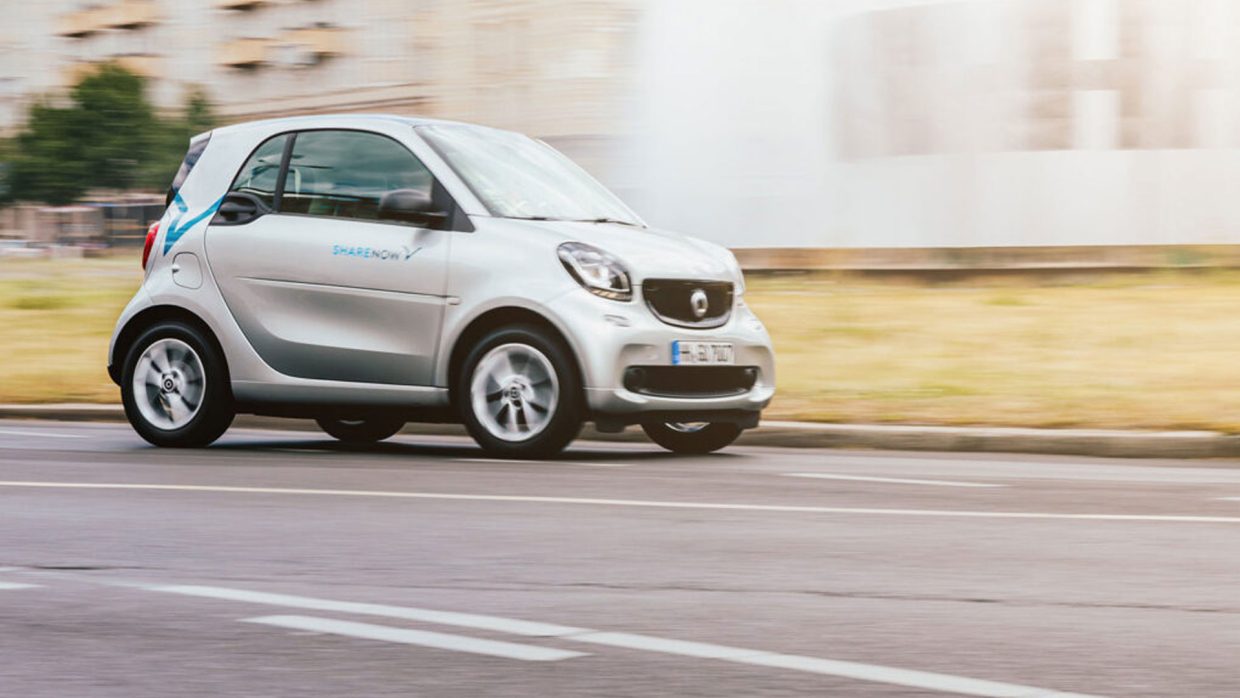
Last but not least, the forms of use for vehicles are getting more and more diverse. In the past, one would buy a car, own it for several years, sell it and buy the next one. Now you can buy a car, lease a car, rent a car, have a vehicle subscription or use car sharing. The users of these different cases also have different needs. Car-sharing users that only drive the vehicle for a couple of hours for instance don’t have time to properly get to know the vehicle and all its functionalities.
And that is something one must keep in mind when designing a vehicle or a particular feature.
So how can you successfully implement UX in your company and your product or service development you might ask. Here are some of my colleagues’ and my own lessons learned.
WHAT ARE THE 3 MOST IMPORTANT LESSONS LEARNED IN UX DEVELOPMENT?
The very first thing you should focus on is the mindset. You must make sure, that the customer and their needs are truly at the heart of the product/service development. I would draw a parallel with “agile”. Just because you use the words “agile” or “sprints” or have a scrum master in your team, does not mean that you work in an agile way. The same goes for UX. It is not enough to have a UI designer. You have to make sure everyone on the project/in the organization shares a user-centered mindset – and at all levels! Much is gained, when you have secured buy-in and understanding from the management.
This relates to my second argument: Responsibility and enablement. UX must have a voice and power. This is surely not only true for user experience topics, but you should define responsibilities amongst your team and also enable these people. It is counterproductive if your development team, including UX designers, researchers, and co. takes a decision, only for someone from the top management to overthrow the decision, because he or she has a different taste or opinion. Unfortunately, this is a fate I witness all too often.
Thirdly, test & validate, test & validate, test & validate. Do not be afraid to include users early in the process, use an MVP approach and develop in iterations. Developing during years behind closed doors will cost you a lot of money, with no guarantee that the service or product will be liked, bought, or understood by users. As soon as you say “I think that my customers want or like XYZ” … think again! You do not want to base your entire development process on guesses alone! If your assumptions are not backed by data, talk to your (potential) users, let them try and test your product or service and get some hard evidence.
“All right”, I hear you say, “I have got a great team that shares a customer-centric mindset, that has defined responsibilities and that cannot wait to develop products with the help of the targeted users… what next? What should I do on an operative side?”
AUTOMOTIVE UX DESIGN OPERATION: ROLES, TOOLS & WORKFLOW – BEST PRACTICES
When it comes to tools, it does not really matter which ones you use, as long as everyone shares the same and has access to them. However, I would advise moving as much away from “static” tools such as Excel or PowerPoint as you can. You need tools where content and concepts can be shown and modified in an interactive and collaborative way.
When considering workflow and roles I would recommend having teams or squads where all responsible people are included. It would be close to an agile team. Regarding UX roles, I would argue that the main point is not having “the perfect” UX role, but rather making sure all the stakeholders are communicating in a fast and efficient way. And ensuring the teams are enabled to take decisions.
And this calls for one key measure, that you might already have heard (maybe too often) – break silos! But it is true! Tearing down the barriers between teams and departments will enable you to design and develop better products and services. Reorganizing all the teams and organizational structures is a big task and you might not have the means to do so. But a great and easy way to start is to make it a habit to invite stakeholders and members of other teams to some of your own team’s meetings and working sessions. That way, all involved parties can play a part in the development process and contribute meaningfully to the project.
This relates to my last point regarding UX best practices. One of the most important and most underrated measures: make sure to have a diverse team and to be inclusive! Researchers, such as S. Schneider V. Eckl1 have shown that a more diverse team generates more creative and holistic solutions and products. Having a diverse team also means that more perspectives are taken into account. This improves the overall product quality and massively benefits the users.
Back to vehicles! What happens, when we apply UX there? Let’s start in particular with the HMI.
WHAT DOES AN INTUITIVE HMI CONCEPT LOOK LIKE?
When people ask me this question, they often expect me to describe one particular system or specific functions. However, there is no one definitive answer to this question. Intuition is something very personal. It is dependent on the mental model and acquired habits of customers/users. Take a regular BMW driver for instance. He or she will have gotten used to the iDrive controller (a large round knob that one can turn or push) to navigate the infotainment system. During our user tests, we often see that this is an element they miss when seated in a vehicle of another brand. For instance, they would state that controlling the infotainment system via a touch display is not good enough as they need haptic feedback. So how intuitive and HMI will really depend on the user.
But of course, I do not want to leave you with such an unsatisfying answer. There are different trends which can surely be noticed.
First of all, users expect products to share some similarities with other products they regularly use. The example is often cited, but it is still relevant: the smartphone. If vehicles have displays that look like tablets and functions which have been inspired by smartphones, then customers will expect the experience to be as good, if not even better than on their personal devices – a tricky task if you consider the time difference of development cycles for phones and vehicles.
Another trend is 3rd-party integration, respectively using the existing (digital) ecosystem of the customer. Several vehicle brands, for instance, offer the possibility to listen to music via a 3rd-party provider (some selected examples: Volvo or Tesla offer a Spotify integration, BMW integrated Napster and Deezer, Mercedes offers Tidal and Amazon Music). The user can thus connect to his/her own account or use an account provided by the OEM and listen to his/her music.
Polestar does this with Google. When a driver first sets up her or his Polestar 2, she or he can directly link it to a Google account, which makes the set-up process fast. As the Polestar 2’s operating system is based on Android Automotive – a Google system – this allows the driver to use the system to its full extent and in a personalized fashion.
“Less is more” is also a trend that has been going on. A quite extreme example for this is the Tesla Model 3 vehicle, which features only one prominent screen in the center console, and which is the point from which drivers control almost all vehicle functions. Other brands such as Polestar, with its Polestar 2, follow this trend too, using flat design and menus with very few levels (except for the privacy settings. They exist but you will probably have to look around a little to find them). (By the way, if you want detailed insights on the Polestar 2, have a look at this article my colleague Fabian Hillig wrote).
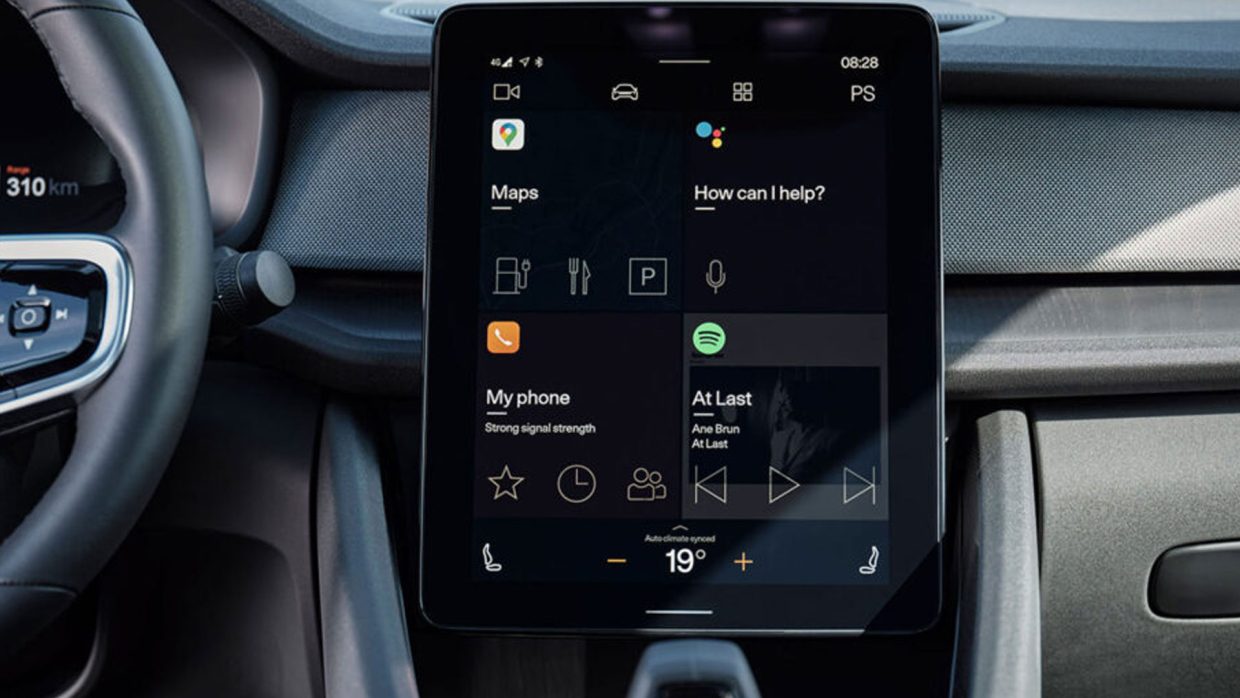
Simplifying menu structures can reduce the operational effort and cognitive cost for the users. (But here again, design simplicity does not necessarily go hand in hand with higher intuition, as some Tesla drivers have proven, taking too much time searching for and controlling something as basic as windshield wipers, ultimately leading to the crash of their vehicle ²).
Finally, context is key. Considering the cultural background and emotional state of users is of utmost importance. A businesswoman who regularly commutes using highways might want to make sure, she takes the fastest route and can take a couple of calls on the way. A family on a holiday trip on the other hand might want to take a scenic route and listen to some music, to occupy the kids in the rear. The businesswoman might be more relaxed because she knows the route; the driver in the family scenario might under more stress because of unknown routes and the commotion inside the vehicle. These are very different contexts and emotional states; important factors to take into account in the development phase. This sounds quite obvious but there is still room for improvement and OEMs are considering this fact more and more, as we will see in the next part.
Besides cultural background and emotional state, context also encompasses further user journey (a term to describe a user’s experience with a product, from start to finish) aspects. One important part is the use of touchpoints and other elements which are used during the journey. Take BMW for instance. A couple of years ago, you could already unlock your BMW X5 with your phone, not using a lock-unlock function, but simply by holding your smartphone close to the door handle. Your phone had transformed into a “digital key”! At the same time, BMW was offering the option to mirror your smartphone wirelessly via Apple CarPlay in your car. Sounds like a great experience! However, the wireless mirroring function was only available for iPhones and the digital key function was only available for Android-based smartphones! From a customer point of view an unsatisfactory combination. Since then, however, BMW upgraded its game and since this year, you can also use an iPhone as a digital key.
This now begs the question: Which HMI can you use to make the in-car experience as intuitive as possible? And how does multimodality come into play?
WHAT IS THE ROLE OF MULTIMODAL HMIS IN VEHICLES? AND HOW CAN IT BE BENEFICIAL FOR USERS?
Multimodality in HMI is a trend we have already been seeing for a couple of years, since touch screens, gesture, and voice controls have found their way into vehicles.
Simply put, multimodality is the control of a product, in our case the vehicle and its functions, using different (sensorial) input modes. As mentioned, some functions can for example be controlled using voice input, gesture control, or touch screens. A task (e.g. setting a new navigation destination) can thus be carried out using different input methods (e.g. via voice command or using a touch screen). One could also carry out a task using multiple methods (e.g. starting with a voice command and then using the touch screen).
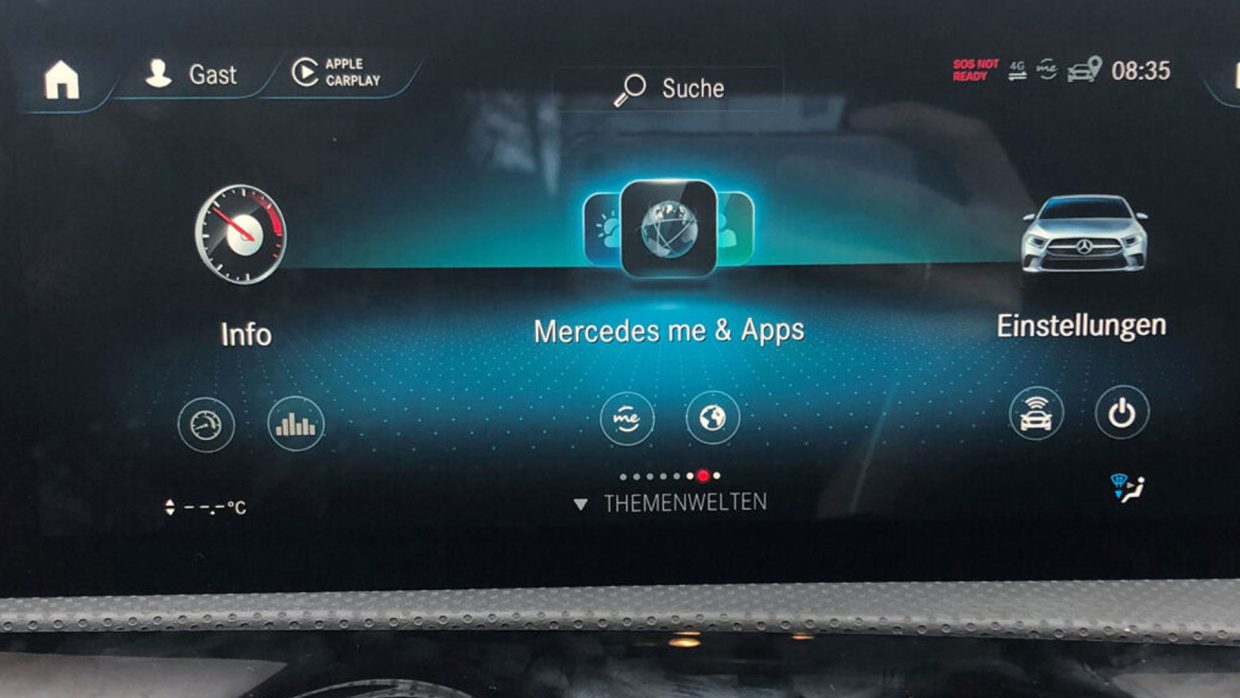
The variety of input modes has been increasing. And the modes themselves are getting better and better. Voice control for instance has seen a dramatic improvement in the last couple of years, changing from fixed voice commands to natural language interaction. Mercedes, for instance, advertised in 2018 its new MBUX system, with this feature. The system would understand a phrase such as “I am cold” and turn up the heating. Nowadays, the vehicle is even able to recognize if the driver or the front passenger is speaking and accordingly adjusts the temperature on the corresponding side(s). This is where it gets quite exciting!
Imagine that the recognition of the person who speaks is not only based on where the person is sitting inside the vehicle, but of the person itself. The system could then react in a user-centered and personalized manner. So, for instance, if an elderly person speaks to the system, it could respond with a higher output volume or by replying in a slower fashion. At the same time, the vehicle could restrict some functions to be used by the driver only and restrict the rights of the rear passengers.
Porsche also took this user-centered approach into account when designing the Porsche Taycan, as the vehicle features a front passenger display. The co-driver has options to control specific functionalities, such as music or navigation (but not vehicle functions like chassis settings), and can do this in a practical user-centered way, by using the display in front of her/him.
As legislations integrate more and more driver and passenger monitoring into their regulations (e.g. Euro NCAP in their Roadmap 2025), the vehicle manufacturer will probably expand their input modes, to not only recognize direct inputs and orders, but also some indirect queues such as expressions and emotions of driver and passengers. Several tier one suppliers and vehicle manufacturers alike have showcased some examples where vehicles identify and react to occupants’ emotions, changing the ambient lighting, the music, or maybe event activating fragrance diffusers.
All this opens up a world of possibilities when one thinks about combining the different elements. But in the end: what is the real pain?
We have seen that the automotive industry is attributing user experience more and more importance. The increasing complexity in technology makes this a necessity. And as we have just seen, this complexity might increase still. The concepts I just mentioned above do sound quite “fancy” and futuristic and there surely still is some way ahead before they will be fully integrated into vehicles. However, I personally think that before tackling that issue, OEMs should focus on improving existing functions and removing barriers that impair the current user experience. In the end, the true challenge is to make sure all the teams, from development to after-sales work hand in hand to ensure a seamless and exciting user experience for the end customer. That calls for an open mindset, an increase in team diversity, and greater and more open communication.
Let’s do just that – talk! These are my thoughts and insights on the subject. What are yours? Do you agree? Do you disagree? And most importantly: why? Whatever your opinion on the subject, I would love to hear/read what you think!
FOOTNOTES
1. S. Schneider V. Eckl (2016), “THE DIFFERENCE MAKES A DIFFERENCE: Team diversity and innovative capacity”
2. Fred Lambert, 2020: „Tesla’s wiper controls are ruled illegal in Germany after someone crashed while using them“
Notiz: Manche erwähnten Funktionen sind nur in ausgewählten Märkten verfügbar.



